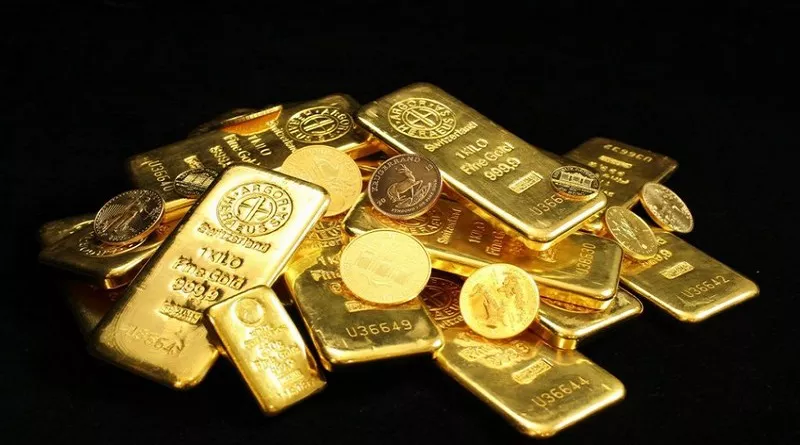Gold continues to shine as one of the year’s top-performing assets, holding strong through the second quarter amid a confluence of macroeconomic uncertainty, rising geopolitical tensions, and looming monetary policy shifts. Up 28% year-to-date, the yellow metal has significantly outpaced equities, benefiting from a weakening U.S. Dollar and persistent inflation pressures.
With markets approaching several high-stakes policy deadlines in July — including major U.S. tariff decisions and a key Federal Reserve interest rate meeting — both gold and silver are positioned to play a central role in navigating the next wave of global financial volatility.
Macroeconomic Landscape Supports Gold’s Strength
Despite a flat S&P 500 and stagnant broader equity markets, gold has surged, underscoring its renewed status as a preferred safe-haven asset. Much of the metal’s momentum has been fueled by continued erosion in the real returns of fiat currencies, particularly as inflation proves more stubborn than expected. Investors seeking protection against currency devaluation have turned to gold, whose dollar-denominated value increases as the U.S. currency weakens.
All eyes now turn to the Federal Reserve’s upcoming decisions. While no rate change is expected at the June 18 meeting — with current rates holding at 4.5% — traders are increasingly pricing in the likelihood of a rate cut on July 30. Lower interest rates typically weigh on the dollar and enhance the appeal of non-yielding assets like gold, reinforcing the metal’s bullish outlook.
Geopolitical Risk and Trade Tensions Add Fuel to the Rally
Gold’s performance is also being underpinned by persistent geopolitical uncertainty. President Donald Trump’s aggressive tariff agenda, particularly toward European Union imports, has re-entered the spotlight. A key tariff deadline originally set for June 1 was extended to July 9, while a broader slate of global tariffs is set to expire on July 8 — just one day prior.
This narrow window of apparent calm is unlikely to last. If no trade deals are finalized by early July, markets could see a renewed surge in safe-haven demand. Investors are already hedging for such outcomes, increasingly favoring metals over vulnerable currencies such as the Canadian dollar, Chinese yuan, and Mexican peso.
The safe-haven narrative was further reinforced after the FBI confirmed the arrest of two Chinese nationals accused of smuggling potential bioterror materials into the U.S., further straining U.S.-China relations ahead of a scheduled Trump-Xi Jinping call.
Technical Indicators Remain Bullish for Gold and Silver
From a technical standpoint, both gold and silver remain well-positioned for further gains. Gold’s MACD (Moving Average Convergence Divergence) has turned positive again, and the 12-day moving average sits above the 26-day, suggesting renewed short-term momentum. The Relative Strength Index (RSI) remains below 60, indicating there is room for upside before overbought conditions emerge.
The key level to watch for gold remains $3,500. A breakout above this mark could set the stage for a push toward the $4,000 target by year end — a level in line with earlier analyst forecasts.
Silver, meanwhile, is testing the critical $35 resistance level — a price not seen since 2012. Attempts to break through this ceiling in October 2024, March 2025, and again this month signal building pressure. A successful breakout could trigger momentum toward the 2011 all-time high of $50, particularly as investor sentiment begins to catch up with gold’s lead.
China’s Role in Driving Physical Gold Demand
China remains a significant driver of physical gold demand. With capital controls still in place and the yuan weakening, Chinese investors are increasingly turning to gold to hedge against both domestic economic uncertainty and foreign exchange risk. As confidence in Chinese equities falters, gold’s appeal as a store of value has grown.
This trend is also reflected among emerging-market central banks and high-net-worth individuals, who continue to allocate more to hard assets amid global instability.
Silver’s Resurgence as a Dual-Use Asset
While gold continues to dominate headlines, silver is quietly staging a resurgence. Known for its strong correlation with gold, silver is benefiting not only from safe-haven demand but also from its industrial utility — especially in sectors like electronics and renewable energy. This hybrid role makes silver an attractive diversification tool for portfolios aiming to balance macro risk with cyclical growth exposure.
With three failed attempts to break above $35 in recent months, silver is now nearing a potentially decisive breakout. If successful, momentum could quickly build toward the $50 level — last reached in 2011 — marking a major shift in market dynamics.
Conclusion
June 2025 may represent a quiet interlude before a turbulent July. With critical U.S. tariff delays set to expire on July 8 and 9, and a potential Federal Reserve rate cut looming on July 30, both gold and silver markets are primed for significant movement.
Technical indicators remain constructive, geopolitical risks are escalating, and central banks are increasingly signaling dovish leanings. Against this backdrop, gold’s march toward the $4,000 mark appears increasingly feasible, while silver’s breakout could trigger a swift run to multi-year highs.
For investors navigating this uncertain landscape, precious metals continue to offer both protection and opportunity — and may once again prove to be the defining assets of global economic upheaval.


